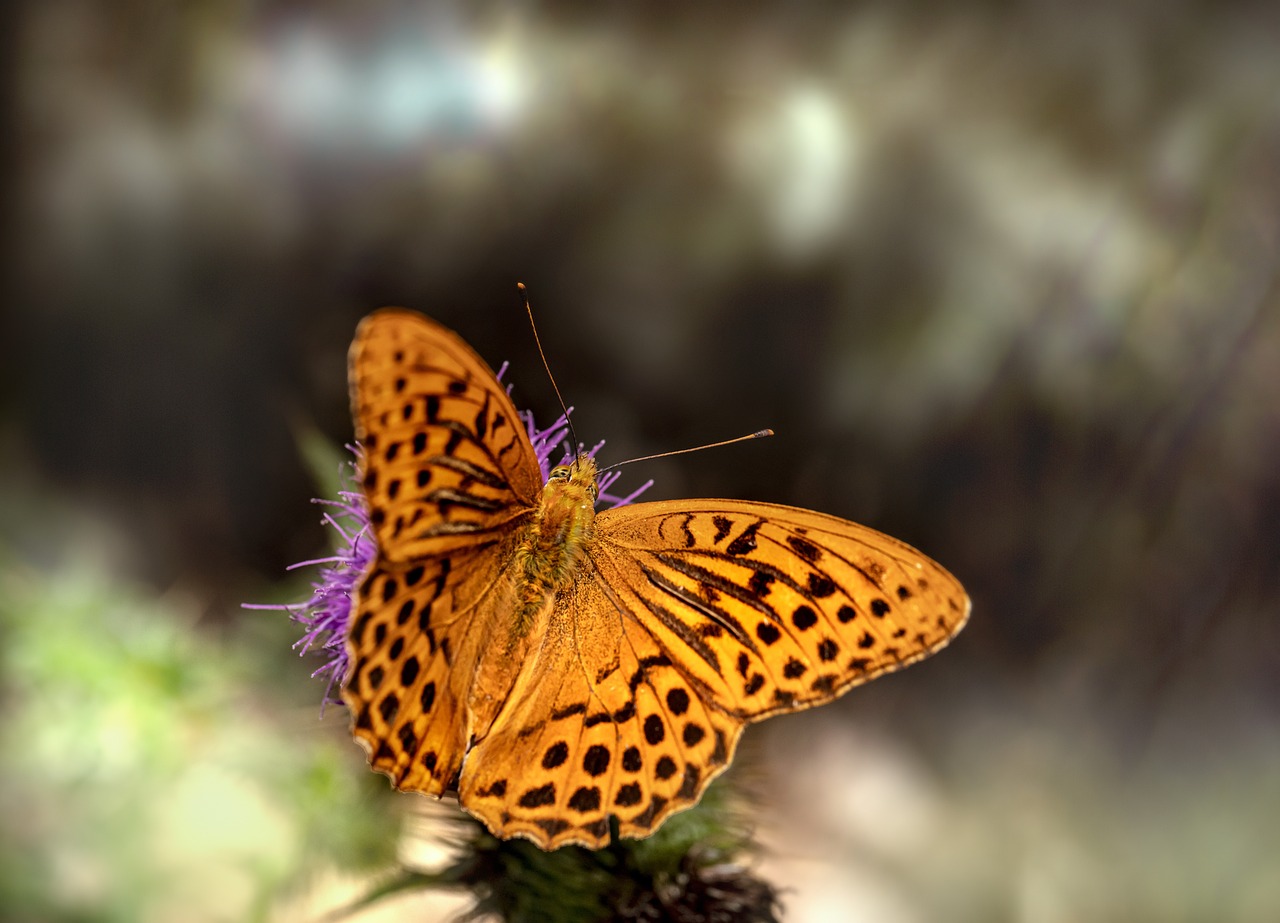The Silver-washed Fritillary (Argynnis paphia) is one of the largest and most striking butterflies found in Europe. Its vibrant colors and graceful flight make it a favorite among butterfly enthusiasts. Here is an overview of this beautiful species:
Description
- Appearance: The Silver-washed Fritillary has a distinctive appearance with a bright orange upper side adorned with black spots and streaks. The underside of the wings is pale green with silvery streaks, which give the butterfly its name.
- Size: This butterfly is relatively large, with a wingspan ranging from 54 to 70 millimeters.
Habitat
- Distribution: Argynnis paphia is widely distributed across Europe, extending into North Africa and Asia. It is found in a range of temperate climates.
- Preferred Environment: This species thrives in deciduous and mixed woodlands, particularly in sunny glades and along forest edges. They are often found in areas with plenty of violets, which are their larval host plants.
Behavior and Ecology
- Flight Period: The Silver-washed Fritillary typically has one generation per year, with adults emerging and flying from late June to early September.
- Diet:
- Larvae: The caterpillars feed mainly on species of violets (Viola spp.), which are usually found in shaded, woodland habitats.
- Adults: Adult butterflies feed on nectar from a variety of flowers, including bramble, thistles, knapweeds, and hemp-agrimony.
- Reproduction: Females lay their eggs singly on tree trunks or nearby vegetation. The larvae overwinter in the leaf litter and resume development in the spring, feeding on violet leaves.
Conservation
- Threats: The main threats to the Silver-washed Fritillary include habitat loss due to deforestation, woodland management practices that remove undergrowth, and pesticide use. Climate change also poses a risk by altering habitat conditions.
- Conservation Efforts: Conservation strategies focus on maintaining and restoring suitable woodland habitats. This includes promoting traditional woodland management practices such as coppicing, preserving glades and edges, and ensuring the presence of larval host plants.
Observing Silver-washed Fritillaries
- Best Times: The best time to observe these butterflies is during their flight period in the summer months.
- Watching Tips: Look for them in sunny woodland glades, along rides, and forest edges. They are strong fliers and often seen feeding on flowers or basking in sunny spots with their wings open.
Interesting Facts
- Courtship Behavior: Males exhibit a distinctive courtship flight, spiraling down from heights to court females. This behavior is a spectacular sight for observers.
- Sexual Dimorphism: There is a notable difference between males and females, with males having more pronounced black streaks (sex brands) on their forewings, which release pheromones to attract females.
- Camouflage: The undersides of their wings, with their silvery streaks, provide excellent camouflage against the dappled sunlight and foliage of their woodland habitat.
Summary
The Silver-washed Fritillary (Argynnis paphia) is a captivating butterfly that enriches the biodiversity of European woodlands. Its striking appearance, fascinating behaviors, and dependence on specific habitats underscore the importance of conservation efforts to protect woodland ecosystems. Observing these butterflies in their natural environment offers a wonderful opportunity to appreciate the intricate beauty of nature.ds is crucial for ensuring its long-term survival.
Views: 29
Subscribe to the newsletter:
